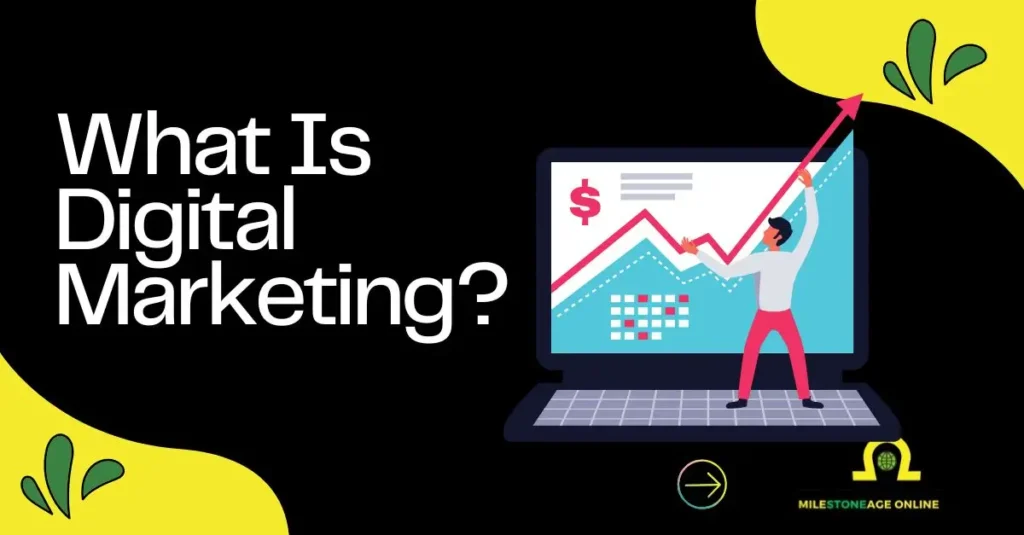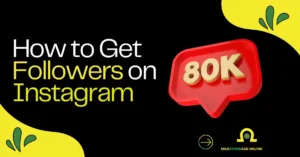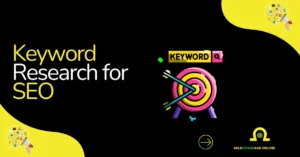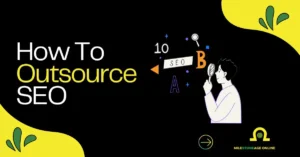What if I told you that most of what you buy starts with a click? That’s how powerful digital marketing has become. I’ve seen it shape businesses, boost sales, and connect people in ways billboards never could.
Digital marketing means using the internet—websites, emails, ads, social media—to grow a brand or sell a product. I’ve used it to help clients go from zero to thousands of users.
With over 5 billion people online (DataReportal), this is where attention lives. I don’t guess—I plan, create, and track. That’s how digital marketing works—and why I trust it.
Table of Contents
What Is Digital Marketing and How it Works?
Digital marketing is how you reach people online using phones, laptops, and tablets. It includes social media, search engines, email, websites, and ads.
You can connect with the right audience at the right time. It’s faster, cheaper, and easier to measure than traditional methods. You don’t need a big budget to get started.
With the right tools and plan, you can grow your brand, build trust, and get more sales. It’s where your customers already are—online.
Advantages of Digital Marketing: Why I Use It to Drive Real Growth
Digital marketing helps me connect with the right people at the right time.
It’s not just about being online—it’s about doing more with less, reaching further, and tracking everything clearly. These are the top advantages I rely on every day.
- Increased Engagement with Customers: Connect instantly through comments, DMs, likes, shares, and replies. I keep the conversation going—not just one-way communication.
- Build a Bonding at Various Stages: Stay in touch from awareness to purchase to repeat buying. I use content, emails, and ads to guide the user through each step.
- Reach a Wider Customer Base: Target globally without leaving my desk. From local campaigns to international launches, I expand reach across channels and borders.
- Improves Conversion Rate: Use data and retargeting to bring users back and convert more. I test pages, CTAs, and offers to make every click count.
- Measurable Results: Track every action—clicks, views, sales, and ROI. I use tools like Google Analytics and Meta Ads Manager to measure what’s working.
- Personalization: Send the right message to the right person. I segment lists, customize ads, and make each user feel seen.
- Cost Effective: Spend less than traditional marketing with better results. I control budgets daily and focus only on high-performing channels.
- Adaptability: Change fast when something’s not working. I tweak campaigns in real-time without waiting weeks for results.
That’s why I use digital marketing—it’s smart, flexible, and made for modern business.
Types of Digital Marketing I Use to Grow and Get Real Results
I don’t rely on just one method to grow a brand online. Digital marketing has many sides—and I use each one based on the goal. From SEO to email to paid ads, every type has a job. I mix and match depending on who I’m trying to reach and what action I want.
Here are 12 types of digital marketing:
1. Search Engine Optimization: How I Make SEO Work for My Content
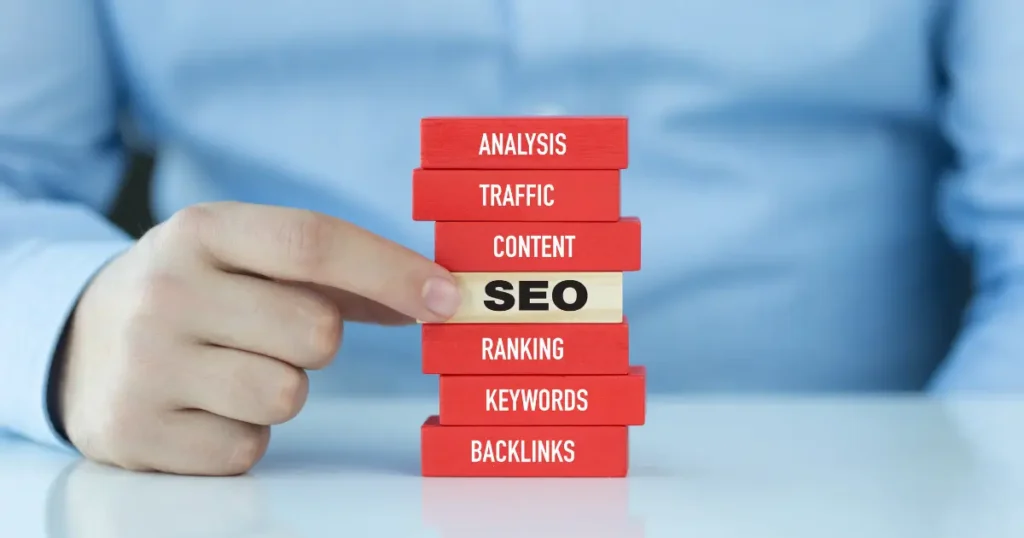
SEO still runs the show. It’s not dead—it’s smarter and more targeted than ever.
Search Engine Optimization helps my content get seen, clicked, and trusted. It’s not just about keywords anymore—Google now focuses on intent, speed, and quality. I follow strategies based on performance and tested results.
• Keyword Research: Use search terms with high volume and low difficulty. About 68% of online experiences begin with a search engine (BrightEdge). I rely on keyword tools like SEMrush and Google Keyword Planner to find what users are actively searching.
• On-Page SEO: Structure content with headers, clean URLs, and proper keyword placement. On-page SEO can increase traffic by up to 200%. My pages are clear, readable, and easy to follow—for users and crawlers alike.
• Technical SEO: Fix issues like slow speed and poor mobile usability. Over 53% of users leave a page if it takes longer than 3 seconds to load (Google). I use PageSpeed Insights and optimize code, hosting, and design for faster performance.
• Off-Page SEO: Build backlinks from trustworthy sources. Pages with more referring domains consistently rank higher 99% of the time. I grow authority through outreach, guest blogging, and earned mentions.
• Local SEO: Focus on optimizing for local searches and customer intent. It’s crucial to keep Google Business Profiles updated and incorporate city-specific keywords to target the appropriate location.
• High-Quality Content: Create content that directly addresses user intent in a concise manner. Google favors helpful content, and pages that provide answers within the first 100 words are more likely to engage users and reduce bounce rates.
Why SEO Will Keep Evolving and Dominating
SEO is evolving fast—driven by voice search, mobile-first indexing, and AI. With 92.96% of global traffic still coming from Google Search, Images, and Maps (Sparktoro), SEO remains the most stable and long-term strategy I trust for organic growth.
SEO strategy isn’t just about ranking #1 on Google anymore. Your audience might find you through ChatGPT, browse YouTube tutorials, then hit Reddit for real reviews — without ever clicking your site. – Brian Dean, Founder of Backlinko.
This shows how SEO is changing, with more focus on being visible across different platforms and understanding what users want.
2. Email Marketing: How I Use Emails to Build Real Connections That Last
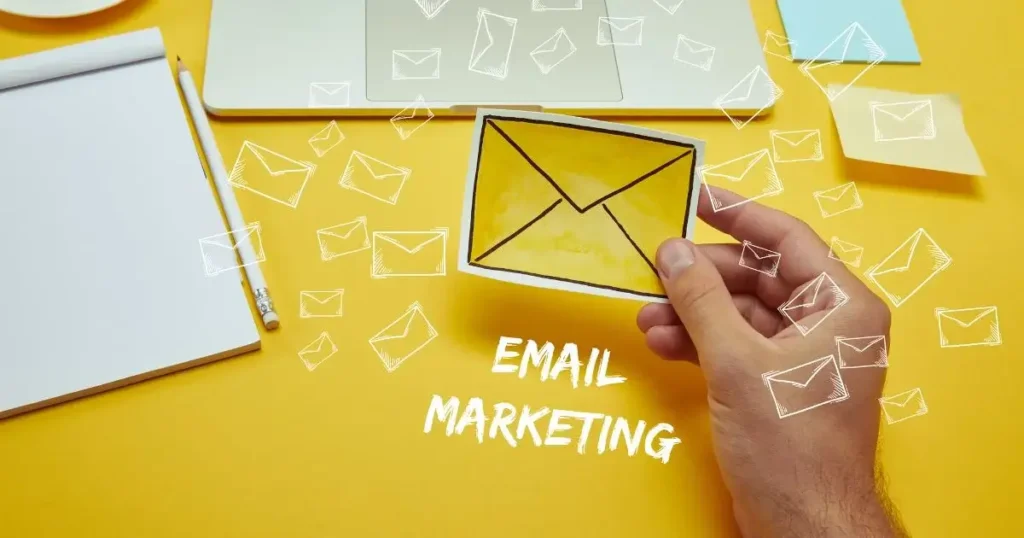
Email marketing remains one of my most reliable digital channels. It gives me control, high ROI, and a direct connection with my audience.
Email is far from outdated. In fact, with 4.48 billion global email users expected by 2025 (Statista), it’s only getting more essential. I use it to build trust, nurture leads, and increase conversions.
• Newsletters: Send regular updates with blog posts, insights, and special offers. This keeps my audience engaged and reminds them of what I offer. Consistent newsletters improve retention and open rates.
• Promotional Emails: Share limited-time deals and product launches. Email marketing remains effective, with a large percentage of people preferring email over other channels for marketing messages. I craft short, impactful copy, strong calls to action, and a sense of urgency.
• Welcome Emails: Greet new subscribers with valuable information and set expectations. Welcome emails have significantly higher open rates compared to regular emails, offering an opportunity to make a strong first impression.
• Drip Campaigns: Automate email sequences that guide users through a journey, step by step. For instance, a three-part email series on my services helps users understand and take action, increasing engagement with minimal manual effort.
• Re-engagement Emails: Reach out to inactive users with exclusive content or feedback requests. These emails help refresh my list and can reignite interest from cold leads.
• Transactional Emails: Confirm actions such as purchases, sign-ups, or downloads. These emails often see much higher open rates and clicks than other types, and I use them strategically to upsell or direct users to the next step in their journey.
Why Email Marketing Will Dominate
Email marketing delivers an average ROI of $42 for every $1 spent (Litmus, 2025). It works across all industries and is unaffected by social media algorithms.
With better tools for automation, segmentation, and personalization, email will remain a core strategy. Especially as privacy updates reduce tracking in ads, owning my audience through email will become even more valuable.
I treat every email like a conversation, not a sales pitch. That’s why my email list remains my most powerful asset.
3. Content Marketing: How I Use Different Content Types to Grow Long-Term
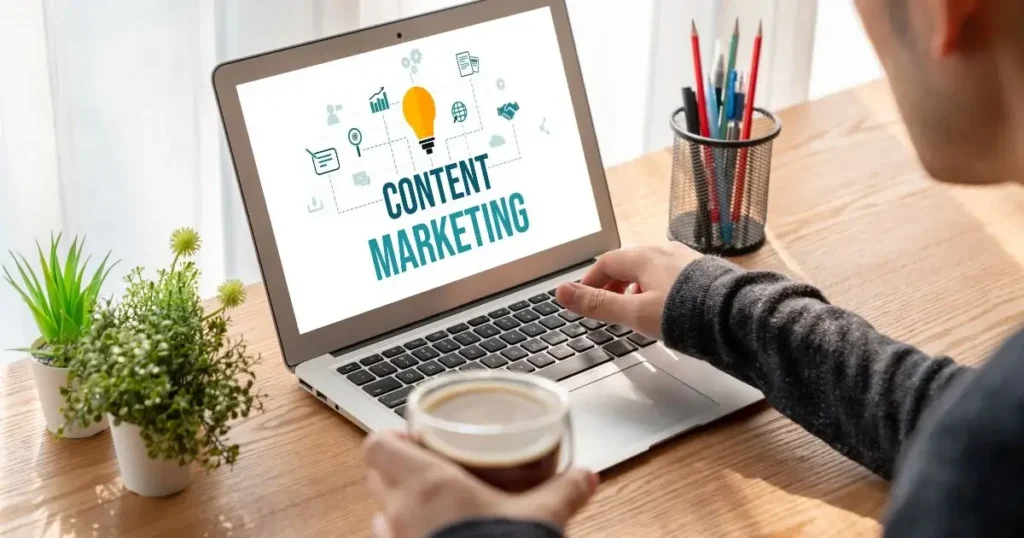
Content marketing is one of my most trusted tools for reaching, educating, and converting my audience. It builds trust, boosts SEO, and drives consistent, long-term traffic.
Content isn’t slowing down. 82% of marketers actively invest in content marketing (HubSpot, 2025), and it delivers three times more leads than traditional advertising (Demand Metric). As algorithms evolve, quality content is becoming the lead driver for success in search, social, and sales.
• Blog Posts: Write informative blog articles to address user questions and improve SEO. Blogs are a powerful tool for long-term traffic growth. Businesses with active blogs see a significant increase in website visitors compared to those without.
• Videos: Create short, engaging videos to capture attention. Video content now drives the majority of web traffic and is favored by social media platforms like YouTube, TikTok, and Instagram Reels. It also increases time-on-site and brand visibility.
• Infographics: Use visually appealing data to communicate facts quickly. Infographics are highly shareable on social media and are often 3x more likely to be shared than other content types, making them effective for blogs and outreach campaigns.
• Case Studies: Share real-world examples of success to build credibility. Case studies are particularly effective for B2B marketing, demonstrating the practical application and value of services. They serve as powerful proof points for decision-makers.
• Ebooks and Guides: Utilize long-form content to generate leads. Gated content like ebooks provides valuable insights in exchange for contact information, helping to grow email lists and establish authority.
• Email Newsletters: Keep the audience engaged with regular updates. Personalized content in newsletters can significantly boost click-through rates, and I use them to share blog posts, exclusive offers, and expert advice.
• Podcasts: Establish authority within my niche by creating podcast episodes. With a growing global audience of podcast listeners, audio content remains a key strategy for reaching new listeners and expanding brand reach.
• User-Generated Content (UGC): Feature customer stories and reviews to build trust. UGC is trusted more than brand content by most consumers, and I encourage reviews, testimonials, and social media shares to further strengthen brand credibility.
Why Content Marketing Will Dominate
Content fuels every channel—SEO, social, email, and paid ads. AI can assist, but human-first, original content will always win. As Google’s Helpful Content updates continue, high-quality, intent-driven writing will outperform spammy keyword dumps.
By 2026, content marketing is projected to become a $600 billion industry (Statista). That’s proof that quality content is the core of future-proof digital strategy. I stick to what works—useful content that speaks to real people.
Content marketing is a commitment, not a campaign.”
— Jon Buscall, founder of Jontus Media
Content marketing is a continuous strategy, not a one-time effort. Creating consistent, valuable content builds long-term relationships and trust with your audience.
4. Search Engine Marketing: How I Help My Clients Get Seen and Clicked Fast
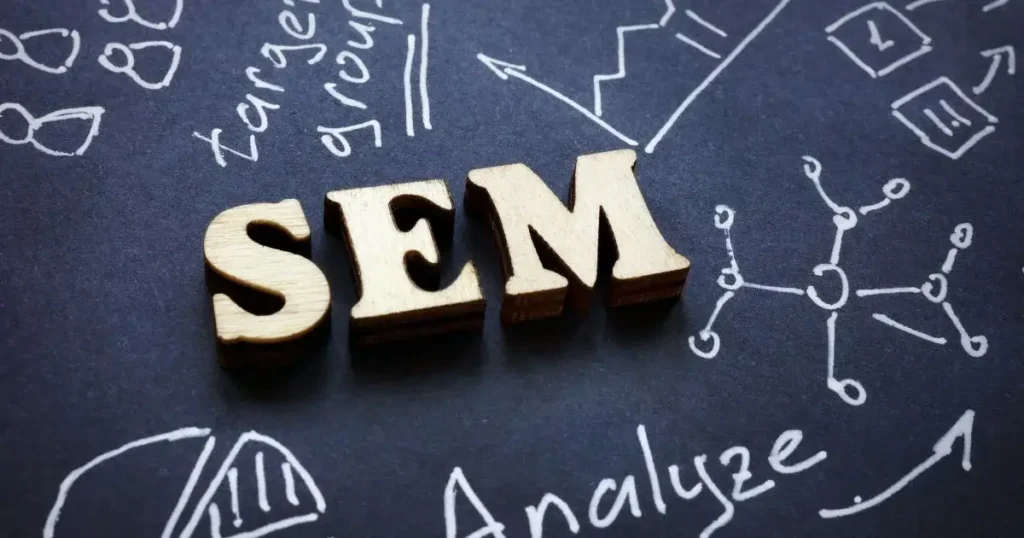
Search engine marketing (SEM) provides instant visibility for businesses. It positions brands right at the top when users search for what they offer.
SEM includes paid ads on Google, Bing, and other platforms, converting clicks into traffic and leads quickly. With 65% of buyer-intent clicks driven by search ads (WordStream), ignoring SEM means missing out on customers who are ready to act.
I help clients launch, optimize, and scale their SEM campaigns with precision. Every budget counts, so I focus on getting real results without wasting clicks.
• Google Ads Campaigns: Set up targeted ads based on keywords, location, and device. Clients only pay when someone clicks. These ads appear above organic results, making them ideal for immediate visibility.
• Keyword Targeting: Choose keywords that align with user intent. Long-tail phrases tend to convert better and cost less. I research popular search terms and match them with client goals.
• Ad Copywriting: Write ad copy that speaks directly to user needs. Clear, compelling headlines and offers boost click-through rates. I A/B test variations to ensure the best performance.
• Bidding Strategy: Manage ad spend efficiently using manual or automated bidding. Whether it’s maximizing conversions or impressions, I tailor the bidding to align with the campaign’s specific goals.
• Landing Pages: Ensure the ad click leads to a well-optimized, mobile-friendly landing page. Better landing pages result in more conversions and lower cost per click.
• Performance Tracking: Track real-time performance, from CTR to conversion rates. Weekly optimizations ensure the campaigns stay effective. Google Analytics and Search Console are key tools in my process.
Why SEM Will Keep Growing
Search ads now account for $190+ billion in global ad spend (Statista), and that figure continues to rise. With AI-powered targeting and better tools, SEM ads are becoming more efficient and cost-effective.
As organic reach becomes more challenging, SEM offers a fast lane to visibility. For my clients, it’s not just about driving traffic—it’s about reaching the right person, at the right moment. That’s where SEM delivers the best results.
5. Affiliate Marketing: How I Help My Clients Drive Sales Without Running Ads
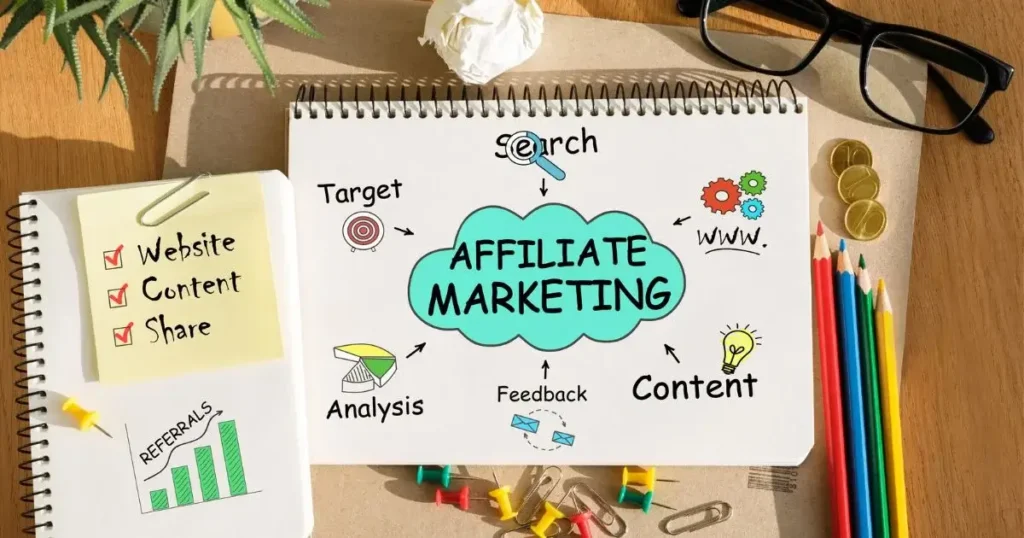
Affiliate marketing is one of the smartest ways to drive sales without needing to spend on ads. It’s performance-based—meaning you only pay when results are delivered.
This model works by partnering with content creators, bloggers, or influencers who promote your product in exchange for a commission. With affiliate marketing driving 16% of all e-commerce sales (Business Insider), it’s a serious channel for growth—not just a side gig.
Many of my clients use affiliate marketing to grow quickly without the need for huge advertising budgets. I help them set up, find the right partners, and track each sale.
• Program Setup: Choose the right platform like ShareASale, CJ, or in-house software. I select tools based on the client’s business model and goals. This setup includes links, tracking codes, and commission rules.
• Recruit Affiliates: Focus on finding the right partners—not just anyone. I target influencers, niche bloggers, and comparison sites already trusted by the target audience. The goal is relevance, not just reach.
• Commission Strategy: Set fair payouts that motivate affiliates while keeping margins healthy. I recommend tiered models, where high performers earn more. This helps keep affiliates engaged and loyal.
• Creative Assets: Provide affiliates with banners, product images, and ready-to-use copy. The easier I make it for affiliates to promote, the more likely they are to share. I help create these assets to ensure consistency and higher engagement.
• Compliance & Tracking: Ensure all links and disclosures meet the necessary guidelines. I set up tracking systems to monitor every click, lead, and conversion. This prevents fraud and ensures accurate payouts.
• Reporting & Optimization: Regularly check which affiliates deliver the best results. I assist clients in pausing underperformers, rewarding top partners, and optimizing strategies based on real-time data.
Why Affiliate Marketing Will Keep Growing
Affiliate marketing spending in the U.S. is projected to reach $13 billion by 2028 (Statista). As cookies fade and trust-based marketing grows, affiliates are becoming even more crucial for growth.
It’s a win-win situation—affiliates earn, businesses grow. For clients looking for results without high upfront costs, affiliate marketing is always part of the plan I recommend.
6. Pay-Per-Click (PPC): How I Help My Clients Get Instant, High-Intent Traffic
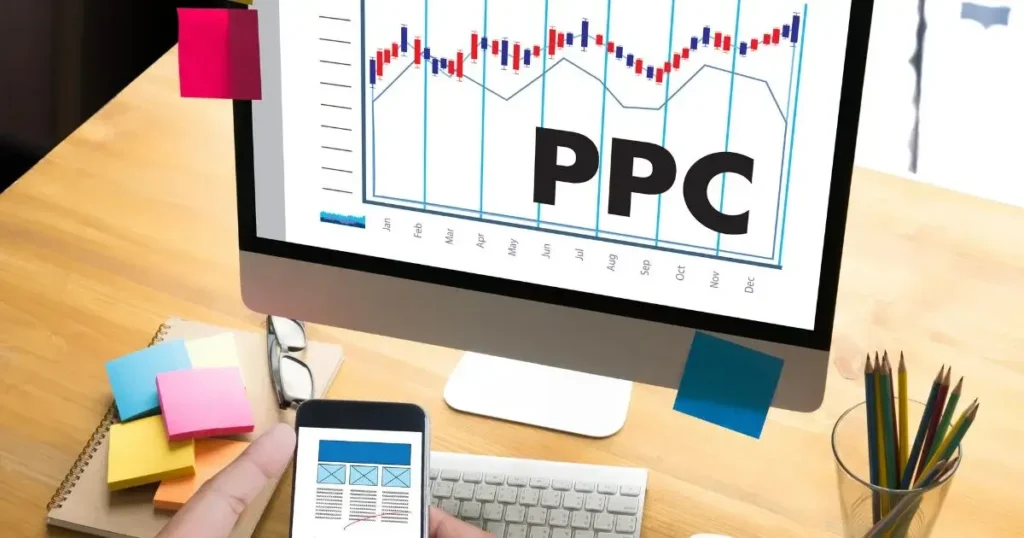
PPC is the fastest way to appear right where buyers are searching. Unlike SEO, which takes time, PPC delivers immediate traffic from users ready to act.
In a competitive digital world, PPC helps my clients show up exactly when they need to. With 65% of high-intent searches resulting in ad clicks (WordStream), skipping PPC means missing out on hot leads.
I set up, manage, and optimize PPC campaigns to make every dollar work smarter, not harder.
• Google & Bing Ads: Create targeted campaigns that appear above organic results. Whether it’s search, display, or shopping ads, I help clients select the best format for their goals.
• Audience Targeting: Reach the right people based on keywords, location, device, income, or interests. I segment audiences and write tailored ads to resonate with each group.
• Keyword Strategy: Bid on keywords that show high buying intent. I go beyond just volume, focusing on terms that lead to action. Negative keywords also help avoid wasting spend.
• Ad Copy & Extensions: Write compelling, clear ad text with strong CTAs. I use ad extensions like call buttons, links, and prices to increase visibility and clicks. These improve ad rank and quality score.
• Budget & Bidding: Set daily limits to control spend and track ROI. I test automated versus manual bidding strategies and adjust based on real-time results. The goal is always more leads at a lower cost.
• Landing Pages: Ensure each ad links to a high-converting, mobile-friendly page. I design pages that match the ad’s promise, boosting Quality Score and reducing cost per click.
• Analytics & Optimization: Track everything—clicks, conversions, bounce rates, and ROI. I fine-tune campaigns weekly to improve performance and cut underperforming elements.
Why PPC Will Stay Strong
By 2026, global PPC ad spend is projected to reach $190 billion (Statista). As competition intensifies, paid search will be the go-to for quick, measurable results.
With AI tools like Google Performance Max improving targeting, PPC is becoming smarter and more efficient. I use a data-driven approach to help clients grow quickly, stay visible, and dominate their niche.
7. Social Media Marketing: How I Help My Clients Stay Relevant and Get Results

Social media isn’t just for brand awareness anymore—it drives traffic, sales, and real business growth. Platforms like Instagram, Facebook, LinkedIn, and TikTok are now part of every serious marketing strategy.
I help my clients use social media the right way—by focusing on engagement, not just posting for the sake of it. With over 5.17 billion active social media users worldwide (DataReportal, 2025), showing up where your audience spends time is a must.
• Platform Strategy: Choose the right platforms based on audience and goals. A B2B client thrives on LinkedIn, while an e-commerce brand may scale fast on Instagram or TikTok. I tailor the plan, not copy-paste it.
• Content Planning: Create a mix of posts—educational, promotional, behind-the-scenes, and user-generated. I build content calendars that keep feeds active and audiences engaged.
• Paid Campaigns: Run targeted ads to grow fast. Paid social offers powerful segmentation—age, location, interests, and behavior. I run A/B tests to find the best combinations for clicks and conversions.
• Community Engagement: Reply, react, and connect. I help clients build loyal communities by answering comments, starting conversations, and sharing user content. Engagement boosts visibility more than any algorithm hack.
• Influencer Collaboration: Partner with creators who align with the brand. Micro-influencers often bring higher engagement and cost less. I handle outreach, tracking, and content coordination.
• Analytics & Optimization: Track metrics like reach, saves, shares, and conversions. I tweak strategies based on what works and what doesn’t. Real-time data leads to better content and stronger ROI.
Why Social Media Marketing Will Keep Leading
Social commerce sales are expected to reach $2.9 trillion globally by 2026 (Salesforce). Short-form videos, AI-based ad tools, and direct in-app shopping are transforming how brands sell.
Algorithms change, but one thing stays the same—people buy from brands they connect with. I help my clients turn followers into fans, and fans into customers. Social media isn’t optional anymore—it’s where attention lives.
8. Influencer Marketing: How I Help My Clients Build Trust and Reach Faster
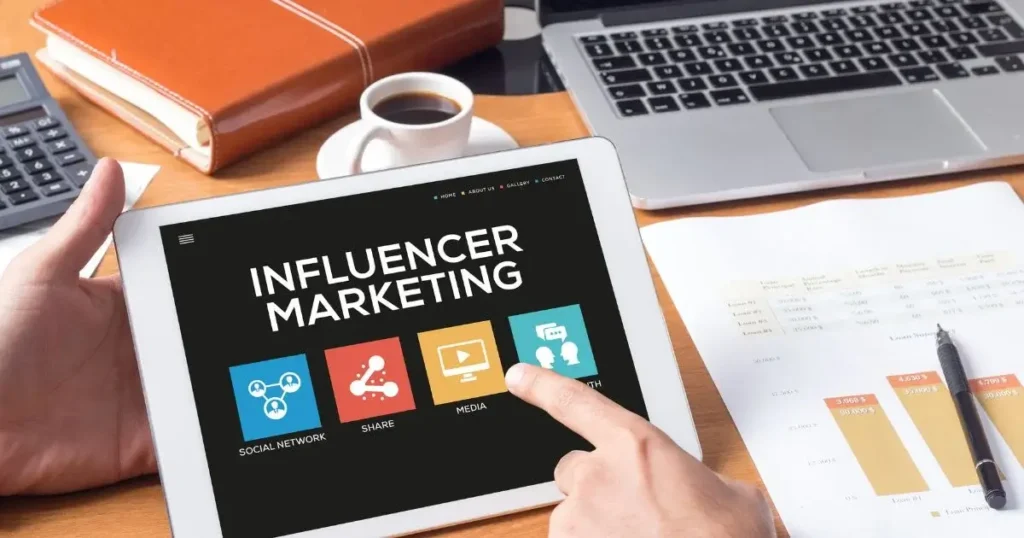
People trust people more than ads—and that’s the power of influencer marketing. Whether it’s product reviews, shoutouts, or collaborations, influencers drive real attention and real action.
I guide my clients in choosing the right voices—not just the biggest names. With 89% of marketers saying influencer marketing ROI is as good or better than other channels (Rakuten), it’s a key part of any growth plan.
• Influencer Selection: Pick creators who match the brand’s audience and tone. I focus on relevance over follower count. Micro-influencers often deliver higher engagement and better trust.
• Campaign Strategy: Plan authentic collaborations. Whether it’s a product unboxing, review, tutorial, or story mention—I craft campaigns that feel natural, not forced. I also align content with key goals: reach, clicks, or conversions.
• Budget Planning: Balance cost and impact. I negotiate fair rates and sometimes trade products for posts. With smart planning, clients can get strong ROI without overspending.
• Creative Direction: Guide content without limiting creativity. I share brand guidelines but let influencers speak in their voice. That’s what keeps it real and effective.
• Compliance and Tracking: Ensure proper disclosures like #ad or #sponsored. I also use tracking links and promo codes to measure performance. Every campaign is tracked and evaluated.
• Relationship Management: Build long-term partnerships. One-off posts are good, but repeat collaborations are better. I help clients create ongoing relationships with high-performing influencers.
Why Influencer Marketing Will Keep Growing
By 2025, influencer marketing is projected to become a $30 billion industry (Statista). With ad blockers on the rise and consumer trust in traditional ads declining, influencer-led content continues to outperform.
Platforms like TikTok, YouTube Shorts, and Instagram Reels are making it easier than ever for creators to drive action. I help my clients ride that wave—by working with influencers who actually influence.
9. Marketing Automation: How I Help My Clients Save Time and Get More Done

Marketing automation helps my clients work smarter—not harder. It’s about setting up systems that run on their own, bringing in leads, nurturing them, and boosting conversions without needing to press send every time.
I use automation to streamline emails, ads, social media, and lead management. With over 76% of companies using marketing automation (Ascend2, 2025), it’s no longer a luxury—it’s a must-have.
• Email Sequences: Set up automated email flows for welcomes, abandoned carts, lead nurturing, and re-engagement. Once it’s running, it converts on autopilot. I make sure every message fits the user journey.
• Lead Scoring: Prioritize the right contacts. I use tools like HubSpot or ActiveCampaign to score leads based on actions—like clicks, visits, and downloads. This helps sales teams focus on the most interested prospects.
• CRM Integration: Connect marketing and sales. I sync automation tools with CRMs like Salesforce or Zoho to keep data clean and actions timely. It reduces manual work and closes gaps.
• Ad Retargeting: Automatically show ads to users who visited a page but didn’t convert. I link behavior-based triggers with Google and Meta Ads to bring users back at the right moment.
• Social Scheduling: Plan posts ahead with tools like Buffer, Later, or Sprout Social. Clients save time, stay consistent, and reach more people without logging in daily.
• Performance Reporting: Send automated reports weekly or monthly. I build dashboards that track leads, conversions, and campaign ROI—so clients always know what’s working.
Why Marketing Automation Will Keep Growing
The global marketing automation market is projected to reach $9.5 billion by 2027 (GlobeNewswire). As more tasks go digital, automation will take over routine work—freeing teams to focus on strategy.
With AI and predictive tools getting smarter, I help my clients stay ahead. Automation isn’t about replacing people—it’s about letting them do better work, faster.
“Marketing automation helps businesses deliver the right message, to the right person, at the right time.”
— HubSpot
10. Mobile Marketing: How I Help My Clients Reach Users Where They Are Most Active

Everyone’s on their phone—so that’s where I take my clients’ marketing. Mobile marketing means reaching people through smartphones with messages that are timely, personal, and easy to act on.
With over 7.3 billion mobile users worldwide by 2025 (GSMA Intelligence), mobile isn’t just a channel—it’s the primary screen for most consumers. I help businesses build mobile-first strategies that convert.
• SMS Campaigns: Send quick, direct texts for offers, updates, and reminders. SMS open rates hit 98% (Gartner), making it one of the most responsive tools. I help craft messages that are short, urgent, and action-focused.
• Mobile-Friendly Websites: Ensure websites load fast and display well on all screens. Google prioritizes mobile usability in search rankings. I optimize design, layout, and speed to keep users from bouncing.
• App Marketing: Promote app installs and usage. I help clients run install campaigns on Google Play and App Store, track usage, and encourage reviews. In-app push notifications also boost user retention.
• Mobile Ads: Run targeted ads on mobile apps, games, and social feeds. I create vertical-friendly visuals and copy that fits the platform—whether it’s Stories, Reels, or YouTube Shorts.
• Location-Based Marketing: Use geotargeting to reach users near a store or event. I set up location-based triggers to send offers or ads when people are in the right place to take action.
• QR Codes: Bridge offline and online. I use QR codes on packaging, print, or in-store signs to drive users to mobile-optimized landing pages or discount codes.
Why Mobile Marketing Is Only Getting Bigger
Mobile advertising spend is expected to reach $400 billion by 2026 (Statista). Users now spend over 4.8 hours per day on mobile devices (App Annie, 2024), and they expect brands to meet them there—fast, simple, and personal.
I help my clients stay mobile-ready and responsive. Because if you’re not thinking mobile first, you’re already behind.
11. Video Marketing: How I Use Videos to Drive Engagement and Build Trust
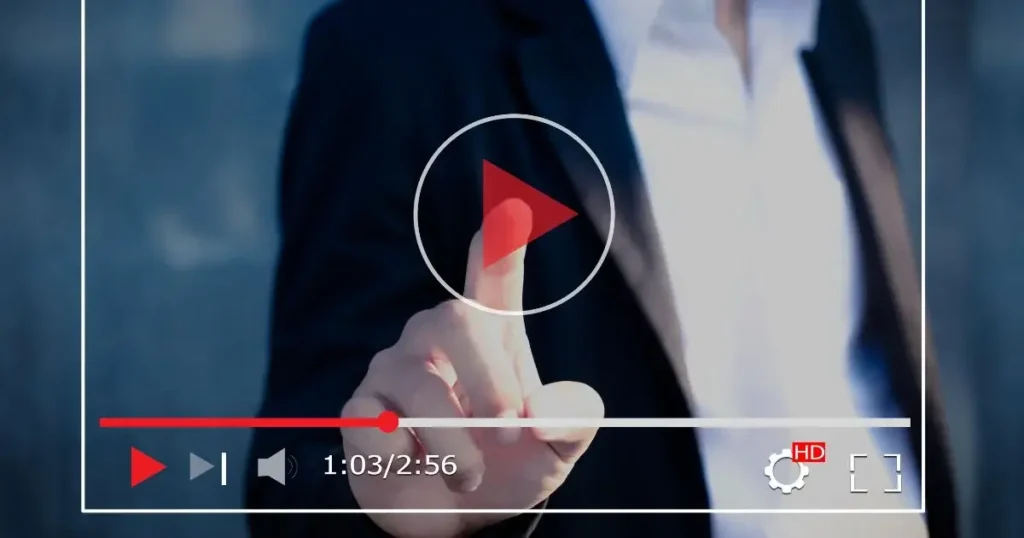
Video marketing is powerful. It engages, informs, and converts.
With over 82.5% of all web traffic coming from video (WYZOWL, 2025), I use video to connect with my audience in a way text alone can’t. Videos capture attention and keep it longer, making them perfect for storytelling and brand messaging.
• Video Strategy: I focus on using videos for specific goals—whether it’s brand awareness, product demos, or customer stories. I ensure each video aligns with the brand’s message and audience interests.
• Social Media Integration: Videos work across platforms—YouTube, Instagram, TikTok, and Facebook. I optimize each one for the platform it’s on, ensuring maximum visibility and engagement.
• Live Streams: Live streams engage audiences in real-time. I use them for product launches, Q&A sessions, and events, creating a sense of urgency and connection with the audience.
• Short-Form Content: Short videos are powerful, especially on platforms like TikTok and Instagram Reels. I create short, engaging clips that capture attention and push viewers toward action.
• Video SEO: I ensure videos are optimized for search engines. This includes using keyword-rich titles, descriptions, and captions. I also leverage video sitemaps to make content easier to discover.
• Performance Tracking: I track metrics like views, engagement rates, and conversion rates. I adjust strategies based on what’s working, making video marketing more effective each time.
Why Video Marketing Will Keep Growing
By 2026, video marketing is expected to account for market size of over $109 billion by 2026. (Personify). The shift to mobile-first consumption makes video even more important.
With its growing reach and effectiveness, I help clients create video content that not only entertains but also converts, building stronger brand connections.
12. SMS Marketing: How I Use Text Messages to Boost Engagement and Drive Conversions
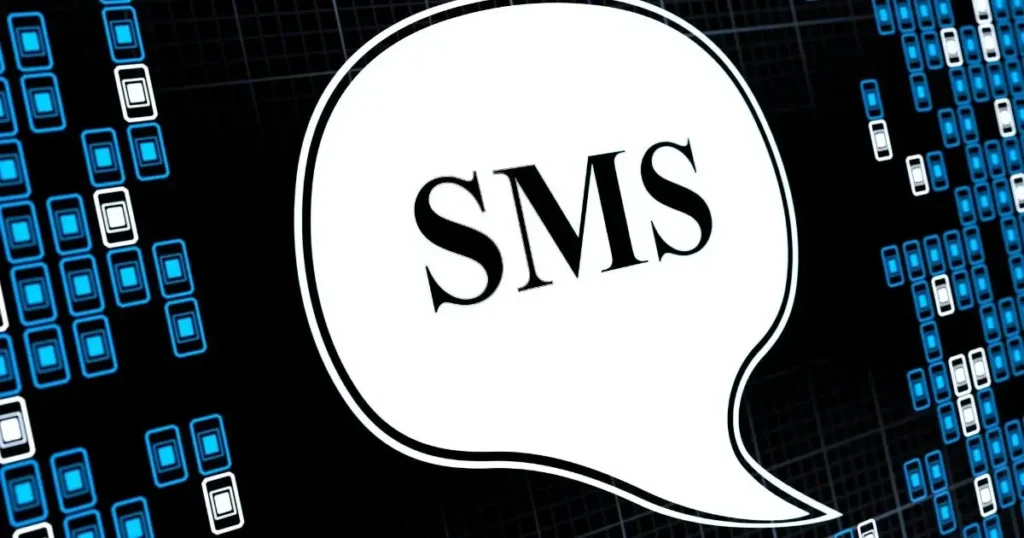
SMS marketing is one of the most direct and effective ways to reach an audience. With 98% open rates (American Eagle), text messages offer an unmatched opportunity to connect instantly with users.
I use SMS marketing to send timely offers, updates, and reminders that prompt immediate action. It’s a powerful channel for driving conversions and keeping audiences engaged.
• SMS Campaigns: Send concise, direct text messages for offers, updates, and reminders. With SMS open rates reaching an impressive 98%, it is one of the most effective and responsive marketing tools. I focus on crafting short, urgent, and action-oriented messages to prompt immediate engagement.
• Segmentation: Target specific groups based on behavior, preferences, or location. I ensure that messages are relevant and personalized, which boosts engagement and increases conversions.
• Personalized Messaging: Personalize each message to make the recipient feel valued. I include first names or tailor content to match customer interests, improving the response rate.
• Timing and Frequency: Send messages at the right time to increase impact. I set up drip campaigns, sending timely messages based on user actions like sign-ups or purchases.
• Compliance: Ensure all messages comply with regulations like GDPR and TCPA. I manage opt-ins, opt-outs, and necessary disclosures to keep campaigns compliant and avoid penalties.
• Performance Tracking: Track metrics such as open rates, click-through rates, and conversions. I optimize campaigns based on real-time results to ensure maximum ROI.
Why SMS Marketing Will Keep Growing
SMS marketing continues to grow, with SMS marketing size in USA is estimated to grow at a CAGR of 20.8 % from 2024 – 2030 (Grand View Research)
Given its high engagement rates and immediacy, SMS will remain a core strategy in my marketing toolbox, helping clients reach customers quickly and effectively.
Digital Marketing Strategy: How I Build a Plan That Gets Results
Every smart move online starts with a strategy. Without one, results are random.
I build digital marketing strategies that are goal-driven, flexible, and backed by data. It’s not about doing everything—it’s about doing the right things, in the right order, for the right audience.
Define the Goal Before Anything Else
I always begin with a clear outcome in mind. Whether the goal is to increase sales, grow a list, or boost traffic, that one target shapes every action I take. A strong strategy is focused, not scattered.
Know Who You’re Talking To
I study my audience before I say a word. Who are they? What do they want? I look at their behavior, age, interests, and pain points. This isn’t guesswork. I use tools like Google Analytics and Meta’s audience data to shape content and ads.
Pick the Right Channels
Once I know the audience, I choose the best platforms. I don’t spread efforts too thin. For example, if it’s B2B, I focus on LinkedIn. If it’s visual and product-focused, I go heavy on Instagram or TikTok. Email, SEO, PPC, and social each have a job.
Create Content That Drives Action
I build a content plan that fits the channel and speaks directly to the audience. Blogs, reels, carousels, emails—I match format with message. Each piece has a purpose: educate, engage, or sell. And it’s all written with the human reader in mind.
Set a Budget and Timeline
I match budget with goals. Small budgets need sharp targeting. Big campaigns need testing room. I also break strategy into timelines—weekly for content, monthly for reporting, quarterly for review. That’s how I stay on track without burning out.
Track, Measure, and Improve
No plan works if it’s not tracked. I set up KPIs and measure every part—from traffic and conversions to bounce rates. The numbers show me what to keep, what to cut, and what to fix. Strategy isn’t fixed. I adjust it constantly based on what works.
Why This Approach Works Now and Later
Digital marketing shifts fast, but strategy keeps it steady. Brands that stick to clear goals and audience-first content grow faster and spend smarter. In fact, businesses with a documented digital strategy are 313% more likely to report success (CoSchedule).
That’s why I never run campaigns without a solid plan. Strategy is how I go from random posts to real results.
Digital Marketing Examples: Where I Look to Learn and Stay Ahead
I follow real brands doing real work. These websites show what works.
When I want to understand what smart, simple, and effective digital marketing looks like, I study websites that do it right. Each of these brands shows how to build trust, engage users, and drive results across different channels.
HubSpot
They focus on attracting people with content, not pushing ads. I’ve learned a lot from their inbound style.
• Focus on inbound marketing: HubSpot builds trust by giving free tools, resources, and courses. Visitors come back because the content helps them solve real problems.
• Strong blog and SEO: Their blog ranks for thousands of keywords. Each post is written to answer a question or solve a user’s need.
• Smart email flows: They send helpful emails based on what users download or click. That way, each person sees only what matters to them.
Neil Patel
Neil Patel mixes SEO, content, and personal branding. I follow his site to see how he simplifies complex marketing.
• SEO-focused content: Every blog post is optimized for high-traffic keywords. It’s clear, detailed, and made for beginners and pros.
• Free tools like Ubersuggest: These tools drive massive traffic and turn visitors into loyal users.
• Strong CTAs: He adds calls to action that make sense—consulting, courses, or audits—based on where you are in the journey.
Moz
Moz is one of the oldest names in SEO. Their site feels built to teach, not just sell.
• Educational content: Their Whiteboard Friday videos and blog posts break down SEO topics in simple terms.
• SEO tools and guides: Everything is actionable—from beginner checklists to advanced audits.
• Consistent branding: Their design and tone stay the same across every touchpoint, which builds trust over time.
Canva
Canva makes visual marketing easy, and they market their own product better than anyone.
• Visual marketing made easy: They use examples, templates, and real use cases to show what’s possible.
• Engaging email series: From onboarding to monthly updates, Canva’s emails feel helpful, not spammy.
• User-generated content: They highlight real users’ designs in newsletters and ads, which adds credibility.
Mailchimp
Mailchimp shows how to keep marketing simple and human—even when it’s automated.
• Strong brand voice: Their copy sounds casual but clear. It feels like it’s written by someone, not a company.
• Helpful guides and case studies: These show how small businesses use Mailchimp to grow. It adds social proof without being pushy.
• Smart automation flows: From welcome emails to abandoned cart reminders, their automation feels personal and well-timed.
Each of these examples shows a different angle—SEO, content, visual tools, automation—but all focus on clarity, trust, and real value. I apply these lessons in my own work to get better results every time.
Digital Marketing Skills: What I Focus On to Stay Sharp and Relevant
The digital space changes fast. I stay updated by building the right skills.
Without the right skills, tools don’t matter. I train myself regularly—because smart skills lead to smart results. These are the skills that help me and my clients grow.
Content Writing and Copywriting
Writing still leads all digital strategies. I use it in emails, blogs, ads, and landing pages. A strong message converts better than any design.
• Write for people, not search engines: I focus on clarity and tone.
• Master headlines and CTAs: These decide who clicks and who doesn’t.
• Match style to platform: Short captions for Instagram. Long guides for blogs.
SEO and SEM Knowledge
Ranking high or running smart ads starts with knowing search engines.
• Understand keyword intent: I choose terms that match what buyers want.
• Know on-page SEO: Headers, meta tags, URLs—all impact ranking.
• Use PPC tools: I work with Google Ads and optimize based on data.
Analytics and Tracking
I don’t guess—I check the numbers.
• Use Google Analytics and GA4: I track traffic, conversions, and bounce rates.
• Read heatmaps and user paths: This shows what works and what gets ignored.
• Set KPIs and measure ROI: Every campaign gets clear performance goals.
Social Media Management
Social content moves fast. I plan, post, and track results daily.
• Pick the right platforms: I don’t try to be everywhere.
• Schedule with tools: I use Buffer or Meta Business Suite to save time.
• Focus on engagement: Likes and shares matter more than followers.
Email Marketing
Email still gives the highest return. I use it to build trust and drive sales.
• Write strong subject lines: That’s how I get the open.
• Build automated flows: I save time with welcome, promo, and cart sequences.
• Segment lists: One message doesn’t fit all. I send what fits.
Visual and Video Skills
Good visuals help me stand out. Especially in ads and social.
• Use Canva and basic design tools: I don’t need to be a designer.
• Shoot short mobile videos: These work best on reels and shorts.
• Follow trends: I tweak them to fit the brand without copying.
Why Skill Building Never Stops
According to LinkedIn, digital marketing is among the top 5 in-demand skills worldwide. And with AI, automation, and platform updates happening often, I make sure to stay hands-on.
I never wait to catch up—I keep learning. Because in digital marketing, the skill you don’t learn today might cost you tomorrow.
How to Track Campaigns and Maximize Performance: A Simple Approach
Tracking campaigns is vital for knowing what works. It lets me fine-tune strategies.
When I run digital marketing campaigns, I focus on real-time data to maximize results. By tracking key metrics, I can make adjustments quickly and improve performance.
Set Clear Goals:
Before tracking, I define what success looks like. Whether it’s increasing traffic, leads, or sales, knowing the goal helps measure everything effectively.
Use Analytics Tools:
Google Analytics, Facebook Insights, and other platforms offer in-depth data. I rely on these tools to track traffic, behavior, and conversions.
Monitor KPIs:
I keep an eye on Key Performance Indicators (KPIs) like CTR, conversion rates, and ROI. These metrics give me a quick snapshot of how campaigns are performing.
A/B Testing:
I test different headlines, ads, and landing pages. A/B testing shows what resonates with my audience and allows me to make data-driven decisions.
Track ROI:
I calculate the return on investment for each campaign. Knowing how much I spend versus what I earn helps refine future strategies.
Optimize Based on Data:
I regularly review campaign performance and adjust. If something isn’t working, I make changes—whether it’s tweaking an ad copy or targeting a new audience.
Use Heatmaps:
Heatmaps show where visitors click on my site. This helps me understand user behavior and optimize pages for higher engagement.
Use UTM Parameters:
I track links with UTM parameters to see where my traffic comes from. This helps me measure the effectiveness of different channels.
Set Up Conversion Tracking:
I track the exact actions users take after clicking an ad. Conversion tracking gives me a clear picture of how well my campaigns drive results.
Tracking campaigns and maximizing performance isn’t just about collecting data—it’s about using that data to make smarter decisions.
Challenges in Digital Marketing: What I Face and How I Handle Them Daily
Not everything in digital marketing runs smoothly. Every win comes with a few bumps.
I deal with constant changes, tight budgets, and rising competition. Still, I stay focused and solve problems as they come. These are the biggest challenges I handle for myself and my clients.
Keeping Up with Algorithm Changes
Google, Instagram, Facebook—they change often. One small shift can drop reach overnight.
• I stay updated through trusted blogs and platform news.
• I test regularly so I’m not caught off guard.
• I avoid tricks that stop working fast. I build strategies that last.
Creating Consistent, Quality Content
Good content takes time. Great content takes even more.
• I plan ahead using content calendars.
• I repurpose one idea across blog posts, reels, and emails.
• I focus on quality over daily posting. One great post beats five weak ones.
Rising Ad Costs
Running ads is no longer cheap. CPCs and CPMs keep climbing.
• I track ROI daily and adjust campaigns fast.
• I use remarketing to bring back warm users at lower cost.
• I test copy and creatives to improve click-through without raising spend.
Standing Out in a Crowded Space
Everyone’s online now. It’s hard to get noticed.
• I work on brand voice that feels human and real.
• I focus on one strong message per campaign—no clutter.
• I build trust through content, reviews, and helpful replies.
Data Privacy and Tracking Limits
With cookie restrictions and user privacy laws, tracking is harder.
• I set up server-side tracking where possible.
• I use UTM links and CRM data to fill the gaps.
• I stay compliant with GDPR and other local rules.
Proving ROI to Clients or Teams
Clients want results—and fast. Explaining strategy takes skill.
• I set clear goals before campaigns begin.
• I share reports that focus on what matters—leads, sales, traffic.
• I explain the ‘why’ behind each move, not just the numbers.
Why I Don’t Let Challenges Stop Me
Digital marketing is fast, messy, and always shifting. But 63% of marketers still say it brings the best ROI across all channels (HubSpot, 2024).
That’s why I stay sharp, keep testing, and never panic. Challenges come and go—strategy keeps me moving forward.
The Future of Digital Marketing: How I See AI Shaping What Comes Next
Digital marketing is changing fast—and AI is right at the center of it.
I use AI tools to speed up tasks, personalize content, and make smarter decisions. With over 80% of marketers now using AI in some form (Salesforce, 2025), it’s clear that the future is already here.
- AI-Powered Content Creation: Use tools to draft headlines, blogs, emails, and ad copy faster.
- Predictive Analytics: Forecast behavior based on past data to send the right message at the right time.
- Chatbots and Automation: Improve response time and customer service with AI-driven bots.
- Personalized Marketing: Segment and deliver tailored content at scale based on user behavior.
- Voice Search Optimization: Adjust keywords for how people speak, not just type.
- Visual and Video AI Tools: Generate or edit visuals and video content quickly with tools like Runway or Canva AI.
- Smarter Ad Targeting: Use AI algorithms to improve targeting and bidding in real-time.
- Email Optimization: Test and tweak subject lines and content based on AI scoring.
- Automation of A/B Testing: Speed up testing of creatives, landing pages, and CTAs with AI suggestions.
- Content Repurposing with AI: Convert blogs to social posts or scripts in seconds.
- Data-Driven Strategy: Get faster insights from data to build campaigns that work better.
- AI-Enhanced SEO: Audit and improve on-page SEO, meta tags, and structure quickly.
The future isn’t guesswork—it’s smart, fast, and AI-backed. I use these tools to stay ahead.
Why I Trust Digital Marketing to Keep Growing
Digital marketing isn’t going anywhere—it’s growing smarter and faster each year. I use data, tools, and proven strategies to help clients grow every day. From SEO to AI-driven ads, the future belongs to those who keep learning and testing.
Ready to build your own digital marketing plan? Let’s connect and make it work.
Key Takeaways
- Digital marketing is essential for reaching and engaging a global online audience.
- SEO and SEM are crucial for driving traffic, with SEO focusing on organic growth and SEM providing immediate visibility.
- AI and automation tools are transforming digital marketing, improving personalization and campaign efficiency.
- Video, social media, and mobile marketing are key drivers for engagement and brand growth.
- Tracking performance with analytics tools and A/B testing helps optimize campaigns for better results.
Frequently Asked Questions
What is digital marketing and why is it important?
Digital marketing involves using online platforms like search engines, social media, and email to promote products and services. It’s important because more people are spending their time online, making it the most effective way to reach and engage your target audience.
How long does it take to see results from digital marketing?
Results vary depending on the strategy, but generally, SEO and content marketing may take a few months to show results, while paid ads (PPC) can produce immediate traffic and conversions. Consistency and optimization are key to long-term success.
What is the difference between SEO and SEM?
SEO (Search Engine Optimization) focuses on improving organic search rankings through content and technical improvements. SEM (Search Engine Marketing) involves paid advertising to appear on search engine results pages. SEO is long-term, while SEM gives quick visibility.
How do I measure the success of my digital marketing campaigns?
Success is measured by key performance indicators (KPIs) such as website traffic, conversion rates, ROI, engagement levels, and lead generation. Tools like Google Analytics and social media insights are used to track and analyze these metrics.
Is digital marketing suitable for small businesses?
Yes, digital marketing is highly effective for small businesses. It provides cost-effective strategies like social media marketing, email campaigns, and SEO that allow small businesses to compete with larger companies. You can scale campaigns based on your budget and goals.


